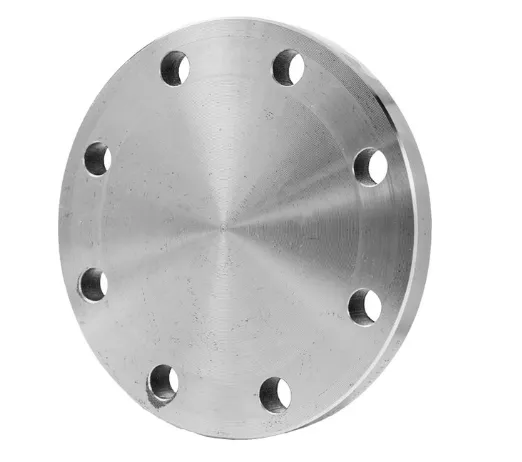-
Cangzhou Yulong Steel Co., Ltd.
-
Phone:
+86 13303177267 -
Email:
admin@ylsteelfittings.com
- English
- Arabic
- Italian
- Spanish
- Portuguese
- German
- kazakh
- Persian
- Greek
- French
- Russian
- Polish
- Thai
- Indonesian
- Vietnamese
- Zulu
- Korean
- Uzbek
- Hindi
- Serbian
- Malay
- Ukrainian
- Gujarati
- Haitian Creole
- hausa
- hawaiian
- Hebrew
- Miao
- Hungarian
- Icelandic
- igbo
- irish
- Japanese
- Javanese
- Kannada
- Khmer
- Rwandese
- Afrikaans
- Albanian
- Amharic
- Armenian
- Azerbaijani
- Basque
- Belarusian
- Bengali
- Bosnian
- Bulgarian
- Catalan
- Cebuano
- China
- China (Taiwan)
- Corsican
- Croatian
- Czech
- Danish
- Esperanto
- Estonian
- Finnish
- Frisian
- Galician
- Georgian
- Kurdish
- Kyrgyz
- Lao
- Latin
- Latvian
- Lithuanian
- Luxembourgish
- Macedonian
- Malgashi
- Malayalam
- Maltese
- Maori
- Marathi
- Mongolian
- Myanmar
- Nepali
- Norwegian
- Norwegian
- Occitan
- Pashto
- Dutch
- Punjabi
- Romanian
- Samoan
- Scottish Gaelic
- Sesotho
- Shona
- Sindhi
- Sinhala
- Slovak
- Slovenian
- Somali
- Sundanese
- Swahili
- Swedish
- Tagalog
- Tajik
- Tamil
- Tatar
- Telugu
- Turkish
- Turkmen
- Urdu
- Uighur
- Welsh
- Bantu
- Yiddish
- Yoruba

Dec . 06, 2024 11:55 Back to list
Selection Guide for 5 Inch 20 Blind Flanges in Various Applications
Understanding 5% Blind Flanges A Technical Overview
In the field of engineering, particularly in piping and mechanical systems, blind flanges play a significant role in the integrity and functionality of various installations. Specifically, a 5% blind flange refers to a nominal size of blind flange that meets certain dimensional, pressure rating, and material standards. This article will delve into what a blind flange is, the significance of the 5% specification, and its applications in different industries.
What is a Blind Flange?
A blind flange is a type of flange that does not have a center hole, effectively blinding the end of a piping system. It is typically used for closing off the ends of piping systems, pressure vessels, or boilers, thereby preventing fluid flow. Blind flanges are crucial in providing an airtight seal, ensuring that pressure is contained within the system and that external contaminants cannot enter.
Blind flanges are widely used in various applications, including oil and gas pipelines, chemical processing plants, and water treatment facilities. They are available in various materials such as carbon steel, stainless steel, and plastic, depending on the specific requirements of the system they will be used in.
The Importance of 5% Specification
The 5% in 5% blind flange can refer to different aspects depending on the context, but typically it relates to the tolerance levels in flange dimensions, pressure ratings, or even the percentage of bolting material needed for mounting.
1. Dimensional Tolerance The 5% tolerance indicates that the physical dimensions of the blind flange can vary by 5% from the nominal or specified measurement. This is essential because it allows for some flexibility during installation and ensures compatibility with existing piping systems and components.
2. Pressure Rating In terms of pressure ratings, a 5% adjustment might refer to the maximum allowable working pressure (MAWP) that a blind flange can accommodate. The unique rating ensures that even under fluctuating conditions, the integrity of the flange and the system is maintained.
3. Material Consideration For material specifications, the 5% may highlight the allowable variations in material properties, such as yield strength and tensile strength, ensuring the flange can withstand the demanded mechanical loads.
Applications of 5% Blind Flanges
5 blind flange

5% blind flanges find extensive usage across various industries
- Oil and Gas In oil and gas pipelines, blind flanges are employed to close off lines that are under maintenance or when pipelines are taken out of service. This practice helps to isolate sections of the pipeline while maintaining safety and efficiency.
- Chemical Processing In chemical plants, maintaining the integrity of piping systems is vital due to the potentially hazardous materials being transported. Blind flanges are used to seal off sections that require inspection or maintenance, ensuring that hazardous substances do not escape.
- Water Treatment Facilities Water treatment plants also utilize blind flanges to manage the flow of water through various treatment processes. They play a critical role in isolating sections of the system for routine cleaning or repairs.
Installation Considerations
When installing a 5% blind flange, certain considerations must be taken into account
- Surface Preparation The surfaces of the flange and the mating surface must be properly cleaned and prepared to achieve the best seal possible. Ensuring a flat and smooth surface reduces the chance of leaks.
- Bolting Procedure Proper bolting procedures should be followed, ensuring that the bolts are tightened to the specified torque to provide adequate sealing pressure. Excessive torque can lead to flange warping, while insufficient torque can result in leaks.
- Alignment Proper alignment is crucial in blind flange installation. Misalignment may cause stress on the flange and joints, leading to premature failures.
Conclusion
5% blind flanges are integral components in numerous industrial applications. Understanding their specifications, applications, and installation practices is essential for engineers and mechanics alike. These flanges aid in maintaining the integrity of systems by effectively sealing off pipe ends, ensuring both safety and operational efficiency. By adhering to defined specifications and standards, industries can guarantee a reliable and effective piping system that meets their specific operational needs.
Latest news
-
ANSI 150P SS304 SO FLANGE
NewsFeb.14,2025
-
ASTM A333GR6 STEEL PIPE
NewsJan.20,2025
-
ANSI B16.5 WELDING NECK FLANGE
NewsJan.15,2026
-
ANSI B16.5 SLIP-ON FLANGE
NewsApr.19,2024
-
SABS 1123 FLANGE
NewsJan.15,2025
-
DIN86044 PLATE FLANGE
NewsApr.19,2024
-
DIN2527 BLIND FLANGE
NewsApr.12,2024
-
JIS B2311 Butt-Welding Fittings LR/SR 45°/90° /180°Seamless/Weld
NewsApr.23,2024











